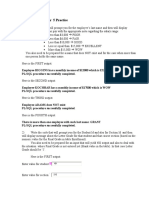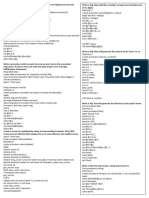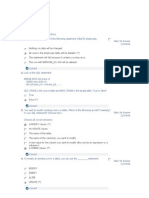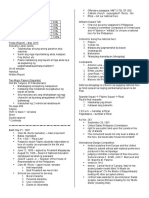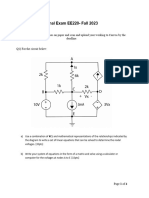0% found this document useful (0 votes)
65 views15 pagesDBMS Lab Assignment 3: PL/SQL Tasks
This document contains the code for various PL/SQL programming assignments related to database management systems (DBMS). It includes code to create tables, insert data, write triggers, use cursors and perform calculations. Programs are provided to calculate employee incentives, update timestamps on row changes, validate data and handle exceptions.
Uploaded by
Nilesh kumar kamalCopyright
© © All Rights Reserved
We take content rights seriously. If you suspect this is your content, claim it here.
Available Formats
Download as DOCX, PDF, TXT or read online on Scribd
0% found this document useful (0 votes)
65 views15 pagesDBMS Lab Assignment 3: PL/SQL Tasks
This document contains the code for various PL/SQL programming assignments related to database management systems (DBMS). It includes code to create tables, insert data, write triggers, use cursors and perform calculations. Programs are provided to calculate employee incentives, update timestamps on row changes, validate data and handle exceptions.
Uploaded by
Nilesh kumar kamalCopyright
© © All Rights Reserved
We take content rights seriously. If you suspect this is your content, claim it here.
Available Formats
Download as DOCX, PDF, TXT or read online on Scribd
/ 15


















